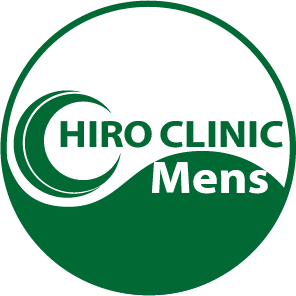この記事の概要
This article describes the diagnosis and treatment of ED (erectile dysfunction) in the U.S. ED is defined as the inability to maintain an erection necessary for sexual activity, and diagnosis is made through an interview, physical examination, blood tests, psychological evaluation, and ultrasound examination. Treatment options include the use of PDE5 inhibitors, penile implants, negative pressure suction devices, and psychological counseling, with patient choice and individualized approaches recommended. Lifestyle modifications are also important for treatment.
ED (Erectile Dysfunction) is an erectile disorder that occurs in men over the age of 40. These are the guidelines of the American Urological Association (AUA) in Japan.The causes of ED are varied and include a variety of factors such as stress, physiological, and psychological lifestyle. Main article details: the diagnostic process, treatment options, and quality of life approaches for ED patients.
Definition and background of ED
ED is medically defined as “the inability to achieve and maintain an erection sufficient for satisfactory sexual activity.” An erection occurs when sexual stimulation signals from the brain to increase blood flow to the penis. While the risk of developing ED increases with age, young people can also develop ED due to stress, lifestyle and underlying medical conditions.
ED is medically defined as “the inability to achieve and maintain an erection sufficient for satisfactory sexual activity.” An erection occurs when sexual stimulation signals from the brain to increase blood flow to the penis. While the risk of developing ED increases with age, young people can also develop ED due to stress, lifestyle and underlying medical conditions.
Diagnostic process
The diagnosis of ED is made through a detailed evaluation by a physician, which takes into account a range of physical and psychological factors. The diagnosis includes the following processes
1. Medical interview and physical examination
The first step in the diagnosis is a questioning and physical examination by a doctor.During the consultation, the doctor will ask about the patient’s past medical history, current health and sex life. The doctor will also ask about the cause of ED, the frequency of symptoms, and sexual desire. This helps to determine the physical or psychological reasons behind ED.
The physical examination includes visual inspection and palpation of the penis and testicles to check for organic problems (e.g., neurological or vascular abnormalities). Blood pressure and heart condition are also frequently checked, and this information is important because ED is often an early sign of cardiovascular disease.
2. Blood test
Blood tests are an important step in determining the cause of ED. Blood tests are performed to identify a range of underlying conditions associated with ED, such as cardiovascular disease, diabetes, low testosterone, and liver and kidney dysfunction. Low testosterone (hypotestosterone) in particular is one of the leading causes of ED and measuring hormone levels can help in the diagnosis.
3. Psychological assessment
Psychological factors such as stress, anxiety and depression may also contribute to ED. therefore, a psychological evaluation is conducted when necessary. A doctor or professional counselor will evaluate the patient’s living environment, mental state and past traumas to determine if psychological treatment is needed. If psychological problems are the cause, counseling or psychotherapy may be an effective treatment.
4. Echography
In diagnosing ED, ultrasound (especially Doppler ultrasound) can be used to assess blood flow to the penis. This test can confirm whether impaired blood flow is the cause of ED. If blood flow to the penis is inadequate, an arterial or venous problem is suspected, which can have a significant impact on diagnosis and treatment strategies.
5. Nocturnal Penile Penis Erection Test (NPT)
The nocturnal penile tumescence test (NPT) is a test that checks whether a patient has a natural erection at night. This test is done to distinguish whether ED is a physical or psychological problem. Normally, a healthy man will have several natural erections at night, but if this cannot be confirmed, it is strongly suspected to be due to physiological factors.

Treatment plan
Depending on the etiology, different approaches may be used to treat ED; the AUA guidelines emphasize patient autonomy and encourage patients and their partners to choose the best treatment option after hearing all treatment options explained.
1. Drug therapy
PDE5 inhibitors are the drugs of choice for ED, with Viagra (sildenafil) and cialis (tadalafil) being widely used. These medications work by increasing blood flow to the penis to aid in erection; PDE5 inhibitors are effective when taken 30 minutes to an hour before sexual activity.
However, they are not effective in all patients. In particular, they are contraindicated in patients with cardiovascular disease and those taking nitrates. Side effects have been reported, including headache, burning sensation in the face and visual disturbances.
2. Injection therapy
When medication does not work, it can be treated by injecting medication directly into the penis. Injecting alprostadil, a common medication, into the penis dilates blood vessels and promotes erection. The advantage of this method over medication is that the results are immediate and long-lasting, but the disadvantage is that the injections can be painful and uncomfortable.
3. Penile implant
Penile implantation is a surgical treatment in which an artificial device is surgically implanted into the penis. It is the treatment of choice when medication or injection therapy does not work. There are two types of implants, expandable and non-expandable, and the choice depends on the patient’s wishes and condition. This treatment has a high success rate and patient satisfaction, but the risk and cost of the procedure can be a major obstacle.
4. Negative pressure suction device (penis pump)
A negative pressure suction device is a device that stimulates an erection by attaching a cup to the penis and using a pump to draw blood to the penis. It is widely used as a non-invasive method for patients who wish to avoid surgery or medication. After use, a rubber ring is placed around the base of the penis to maintain an erection.
5. Psychological counseling
If the primary cause of ED is psychological, counseling or therapy is recommended. Counseling can be very effective, especially when stress, anxiety, depression, or past trauma is involved. Seeking counseling with a partner may help improve communication and problem solving.
Improvement of lifestyle
Lifestyle changes are also an important part of treating ED.Dietary changes, regular exercise, smoking cessation and limiting alcohol intake are recommended. Cardiovascular health in particular is closely related to ED, and maintaining a healthy lifestyle can help prevent and treat ED.
Stress management is also important. Excessive stress can exacerbate ED, so relaxation techniques, hobbies and proper rest are recommended.
Reach a verdict
In the U.S., the diagnosis and treatment of ED requires an individualized approach that is tailored to each patient, and the AUA guidelines emphasize respecting patient choice and offering a variety of treatment options.In addition to pharmacologic and surgical treatments, comprehensive treatment takes into account psychological factors and lifestyle changes.










